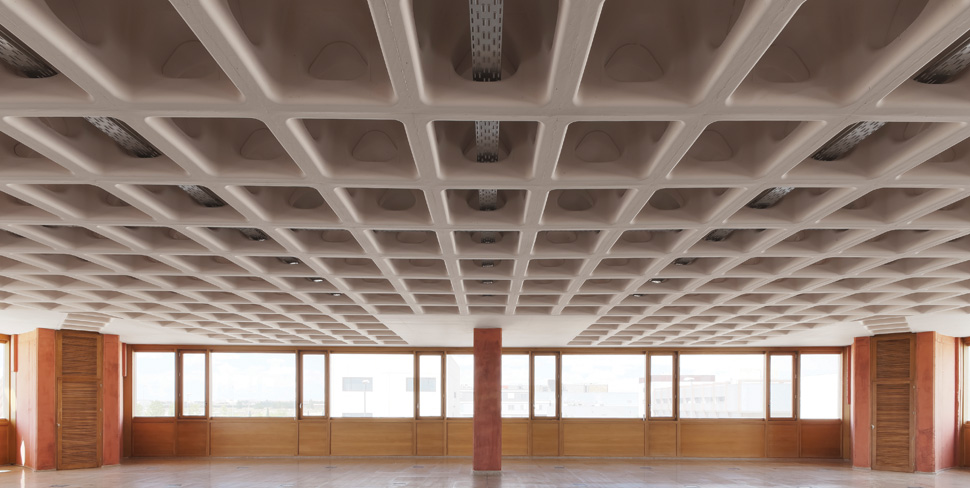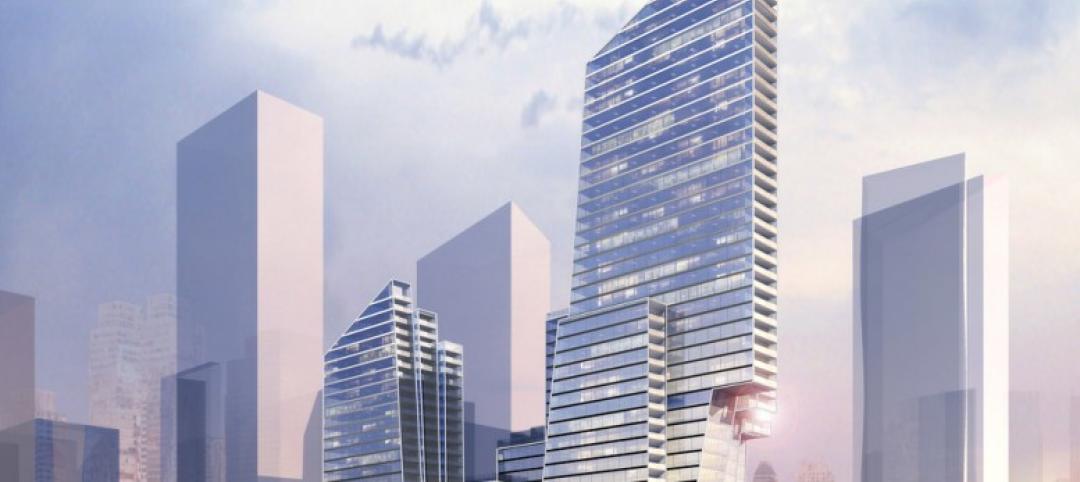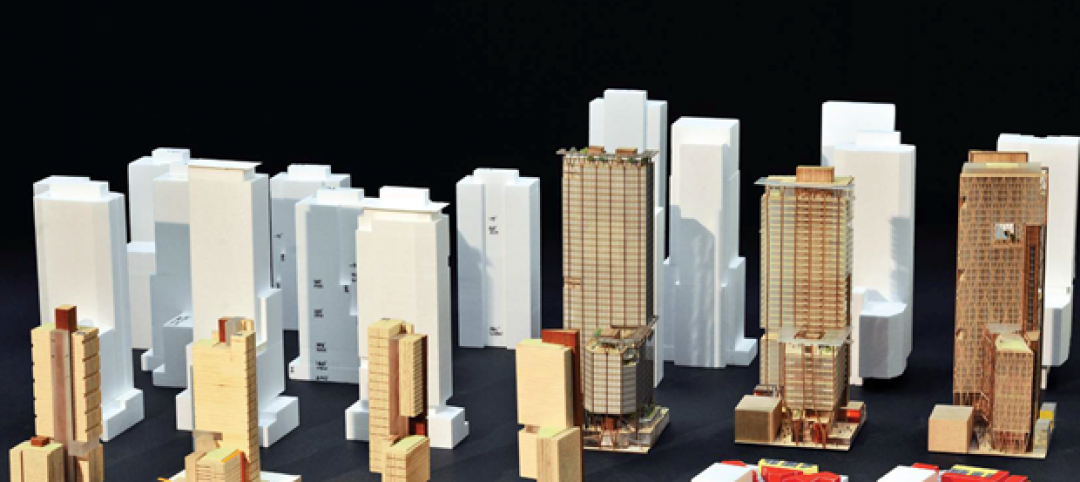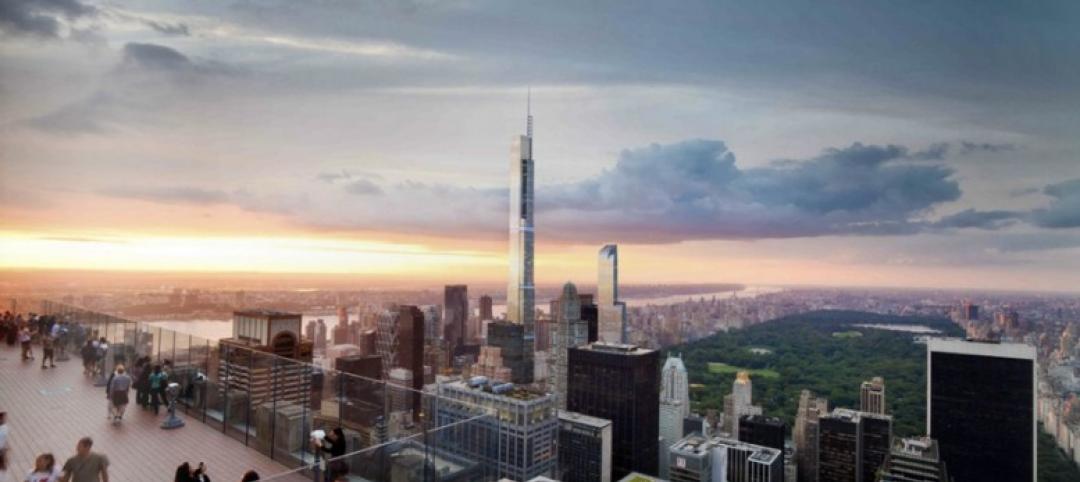The Council on Tall Buildings and Urban Habitat named the winners and finalists of its annual Performance and Innovation Awards
Based on judgment by a prestigious panel of experts, Chiefly Tower in Sydney, Australia snagged this year’s Performance Award, while the Innovation Award went to Spanish manufacturer Holedeck.
Take a look at a more in-depth profile of the winning innovations, as well as a list of the finalists:
Performance Winner
Chiefly Tower, Sydney, Australia
Kohn Pedersen Fox Associates (Architects)
WSP Flack + Kurtz (SE)

The 801-foot tower in downtown Sydney was originally completed in 1992, with 1980s technology. An overhaul was commenced in 2008, where the tower’s key building systems and services were updated to achieve a 4.5 star NABERS Energy Rating.
The CTBUH reports that the project realized a savings of 55 percent in electricity consumption, and reduced its greenhouse gas emissions by 55 percent as well.
Because of all these changes, it was given the Performance Award, which recognizes buildings “that have the least environment impact on the urban realm using measured data,” the CTBUH says, adding that “it is increasingly being recognized that the industry needs to focus on actual ‘performance’ rather than ‘best intentions.’”
“The Technical Awards Jury applauded the efforts to update the energy efficiency of this aging building, both to keep the building competitive with newer structures, as well as addressing critical issues surrounding climate change,” CTBUH says in a statement.
“In a sense, the project gave a ‘new and better life’ to an old asset that was growing less competitive in the market place,” added Ashok Raiji, CTBUH Technical Awards juror and Principal and Mechanical Engineer at Arup.
Innovation Award
HOLEDECK
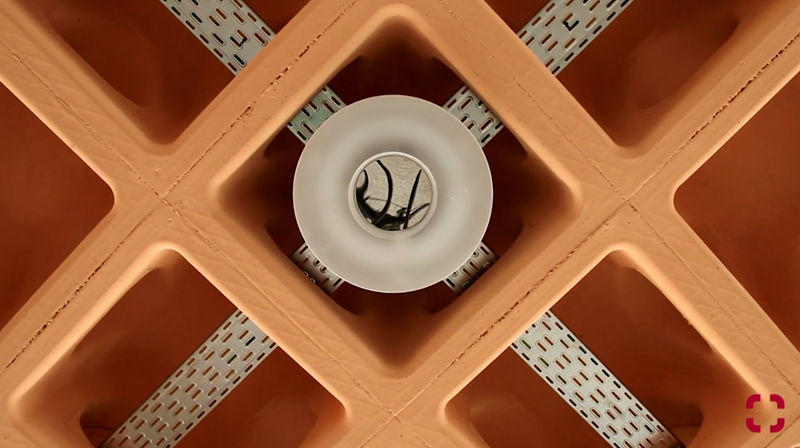 Photo courtesy Holedeck via Vimeo
Photo courtesy Holedeck via Vimeo
The system of voided concrete slabs by the eponymous Spanish manufacturer can be pierced through their thickness by electrical and plumbing systems, which drastically reduces the vertical space needed to house these components.
Reducing the necessary height of each floor also means fewer materials are required to achieve the same floor area as a typical high rise building.
As a result, the system was recognized with the Innovation Award, which focuses on “one special area of innovation within the design construction, or operation of the project, not the building overall,” CTBUH says in a statement.
“Holedeck is a simple and elegant way of creating coffer slabs, with holes in the webs. It overcomes one of the main obstacles to the use of coffer slabs, which is that all services usually have to run below the slab rather than in it. It appears to be particularly suitable for light weight long-span floors or where architects and engineers are interested in making better use of the thermal mass of a concrete coffer slab,” noted Technical Awards Jury Chair and Director, Engineering Excellence Group of Laing O’Rourke David Scott. “The jury felt that some of the best innovations come from simple ideas and HOLEDECK could re-energize this form of construction.”
Finalists
Other projects and products that made it to the final round of judging were:
• Façade Access Equipment by Lee Herzog Façade Access Constulting for its work on the Burj Khalifa
Related Stories
High-rise Construction | Jun 5, 2015
Japanese policymakers discuss mandate for toilets in elevators
This quirky-sounding building code is a safety measure for the earthquake-prone nation.
Wood | Jun 2, 2015
Michael Green Architecture designs world's tallest wood building for Paris competition
“Just as Gustave Eiffel shattered our conception of what was possible a century and a half ago, this project can push the envelope of wood innovation with France in the forefront," said architect Michael Green of the project.
High-rise Construction | May 6, 2015
Two new designs submitted for New York City Riverside Center
Both designs reference the cantilevers and other elements featured in architect Christian de Portzamparc’s original masterplan for the complex, which has now been scrapped.
High-rise Construction | May 6, 2015
Parks in the sky? Subterranean bike paths? Meet the livable city, designed in 3D
Today’s great cities must be resilient—and open—to many things, including the influx of humanity, writes Gensler co-CEO Andy Cohen.
Building Owners | May 6, 2015
Hackathons and RFCs: Why one developer killed the RFP
In lieu of an RFP process, Skanska Commercial Development hosted a three-week "hackathon" to find an architect for its 2&U tower in Seattle.
High-rise Construction | Apr 30, 2015
World Trade Center developer looks to Bjarke Ingels for new tower design
Norman Foster’s design for 2 World Trade Center may be ousted, as developers are currently negotiating with Danish firm BIG to redesign the original scheme.
Hotel Facilities | Apr 29, 2015
OMA unveils design for the Netherlands' largest hotel
Once completed, and if approved, the structure will add three stacked cubes to the Amsterdam skyline.
Multifamily Housing | Apr 28, 2015
Mace and Make work on London's 40-story residential tower
The tower is one of six residential high-rises planned near London’s City Road, which is undergoing a mini construction boom.
High-rise Construction | Apr 23, 2015
Size matters in NYC, where several projects vie for the city’s tallest building honor
The latest renderings of 217 West 57th Street show a tower that would rise higher than the World Trade Center’s pinnacle, when elevations are included.
High-rise Construction | Apr 22, 2015
Architects propose sustainable ‘vertical city’ in the Sahara
Designers aim to make the 1,476-foot tower sustainable, relying on rainwater collection, solar power, and geothermal energy.


